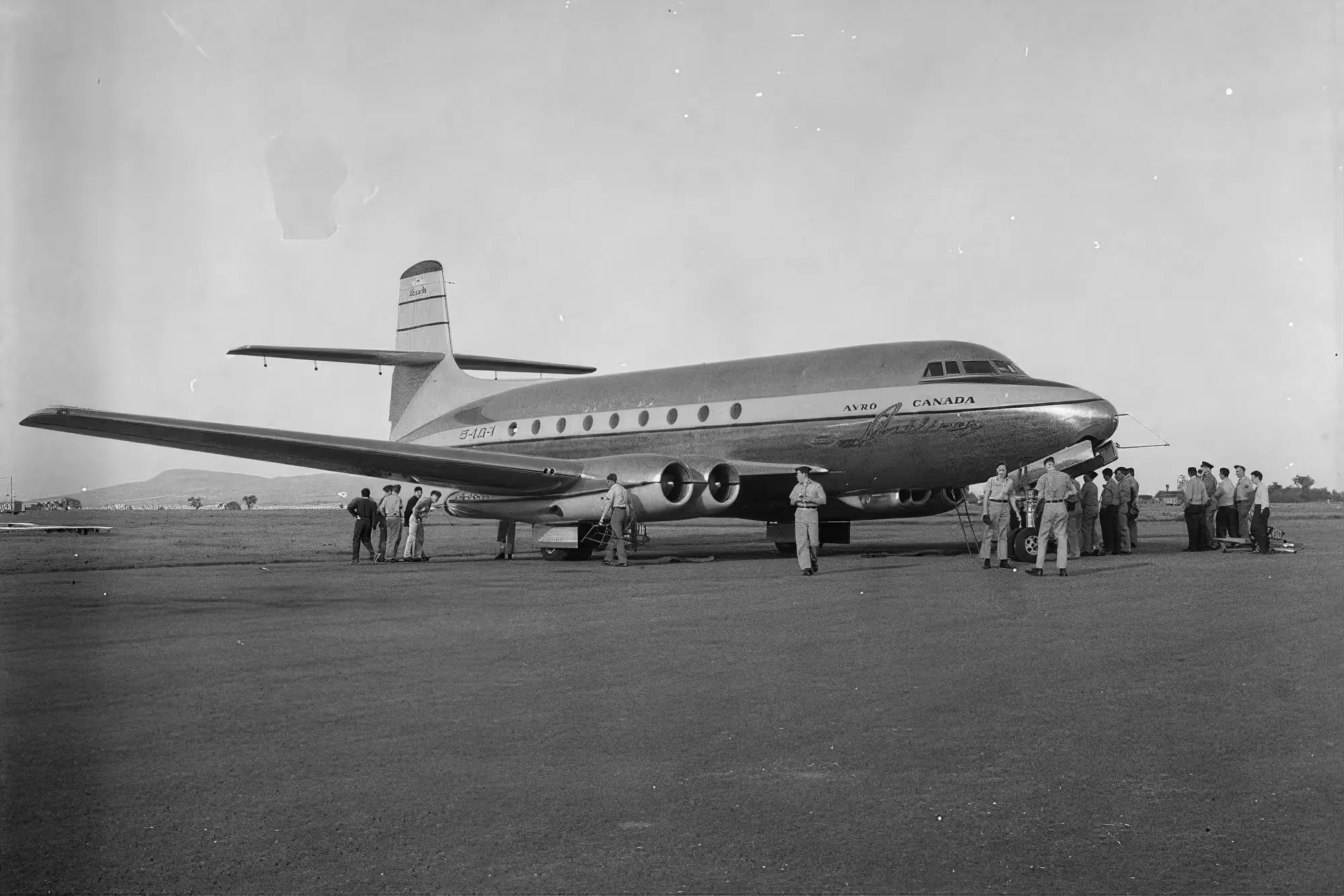DALLAS — Today, in 1949, The prototype Avro Canada C102 ‘Jetliner’ (CF-EJD) took to the skies on its maiden flight.
The ‘Jetliner,’ manufactured at Avro Canada’s Malton, Ontario, site, became the world’s second jet-powered passenger airliner after being beaten into the air by the British-built de Havilland Comet in just 13 days.
The American aerospace engineer, business magnate, film producer, investor, philanthropist and pilot Howard Hughes was very interested in the C102.

Specific Requirements
The aircraft was designed to meet requirements set by Trans-Canada Air Lines (TCA) in 1945. TCA demanded an airliner capable of carrying 50 passengers at 426 miles per hour (684 km/h), over 1,200 miles (1,900 km). It also needed to operate from existing 4,000-foot (1,200-meter) runways.
TCA signed a contract in 1947 stating they would pay CA$350,000 per airframe and that Avro Canada would not sell the type to any other airline for at least three years.
Avro President Fred Smye was unable to uphold these demands. Subsequently, TCA chose to end its association with the aircraft. Work continued on the project thanks to a CA$1.5 million cash injection from Canadian Liberal Party politician C. D. Howe.

Project Dropped
In April 1950, the C102 flew from Toronto to New York, becoming the first jet in the world to carry air mail. The flight was over in just 58 minutes. Upon arrival in New York, the aircraft was met with much fanfare and press attention.
Only one airframe was fully built, and development stopped in December 1961. Avro Canada dropped the project in favor of the manufacturer pursuing military projects.
Only the nose of the aircraft remains and is now on display at the Canada Aviation and Space Museum after being donated by the National Research Council (NRC) in 1967.



.webp)
